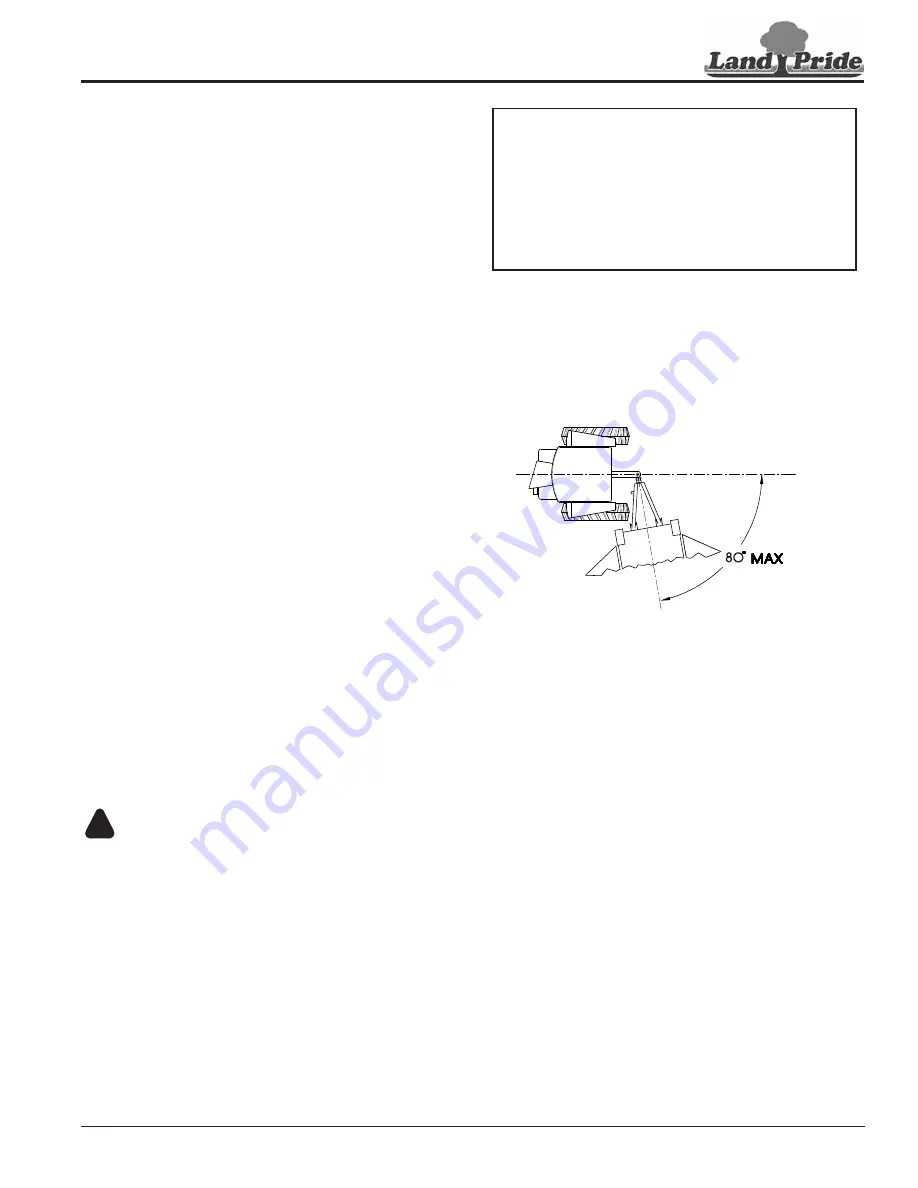
Section 3: Operating Instructions
11/2/18
21
•
Operate only power machines equipped with a certified
Roll-Over Protective Structure (ROPS) and seat belt. Keep
folding ROPS in the “locked up” position when
appropriate. If ROPS is in the locked up position, fasten seat
belt snugly and securely to help protect against serious
injury or death from falling and machine overturn.
•
Do not operate a cutter with a hitch or hitch pin that is
excessively worn, bent, broken, or has structural cracks.
The hitch and/or hitch pin can break apart separating cutter
•
Perform scheduled maintenance. Check for loose
hardware, missing parts, broken parts, structural cracks,
and excessive wear. Make repairs before putting implement
back into service. Serious breakdowns can result in injury
•
Wait for blades to come to a complete stop before accessing
blade bolts through blade bolt access hole.
•
Do not use implement to tow other equipment unless it is
designed with a tow hitch. Doing so can result in loss of
control and damage the equipment.
•
Do not exceed rated cutting capacity of your cutter. See
specifications & capacities for specified cutting capacity.
Exceeding rated cutting capacity can damage drive
components, cutter blades, and deck components.
•
Buildup of debris around moving components and
gearboxes is a fire hazard. Keep rotating parts and
gearboxes free from debris to avoid serious injury and
•
Improper oil level can cause bearing failure and be a fire
hazard. Maintain proper gearbox oil level to avoid serious
•
Do not operate a broken or bent driveline. Such a driveline
will break apart while rotating at high speeds and can cause
serious injury or death. Always remove the implement from
use until the damaged driveline can be repaired or replaced.
•
The cutter must be operated with both wings attached.
Removing one wing will increase risk of rollover. Removing
one or both wings will expose blades. Blades rotating at
high speed will cut body extremities and throw objects.
CAUTION
!
To avoid minor or moderate injury:
Some tractors are equipped with two power take-off speeds.
Be certain your tractor’s power take-off is set at the
implement’s rated power take-off speed or equipment
breakage may result. RC models are rated for 540 rpm and
RCM models are rated for 1000 rpm.
Tractor Turning Angle
Plan your field cutting to minimize number of turns,
especially extreme turning angles. Avoid tractor-to-cutter
turning angles that exceed 80
o
. If the turn cannot be
avoided, disengage power take-off and wait for the
driveline to stop rotating before making the turn.
Constant Velocity (CV) Driveline
Figure 3-3
IMPORTANT:
Maintain correct power take-off
IMPORTANT:
If wing driveline profile is bent or
20795
















































